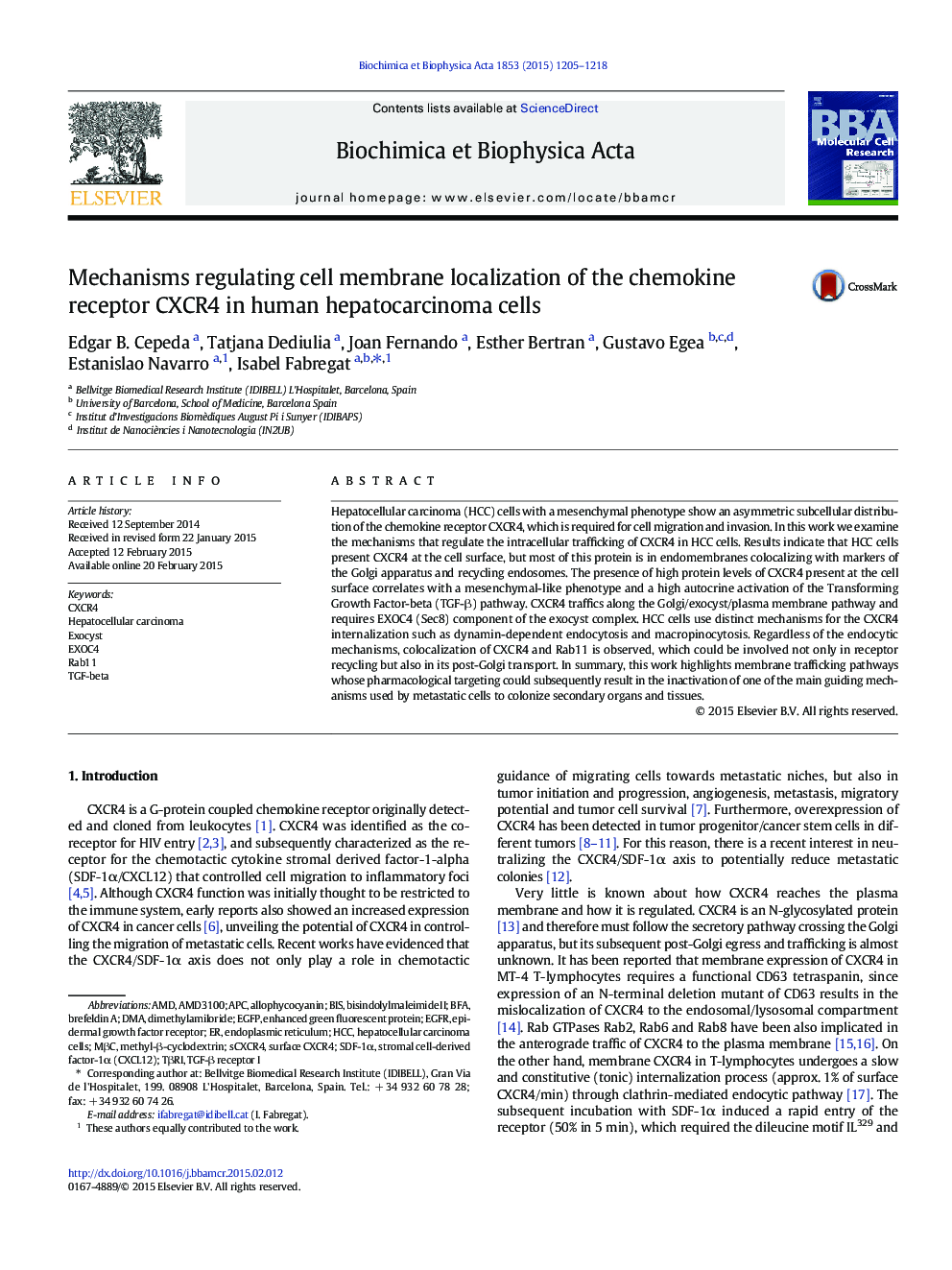| کد مقاله | کد نشریه | سال انتشار | مقاله انگلیسی | نسخه تمام متن |
|---|---|---|---|---|
| 1950507 | 1055644 | 2015 | 14 صفحه PDF | دانلود رایگان |

• HCC cells present CXCR4 at the cell surface, as well as in endomembranes.
• CXCR4 is exported to the plasma membrane following the Golgi/exocyst axis.
• CXCR4 uses dynamin-dependent mechanisms and macropinocytosis for internalization.
• CXCR4 colocalizes with Rab11 in receptor recycling and post-Golgi transport.
Hepatocellular carcinoma (HCC) cells with a mesenchymal phenotype show an asymmetric subcellular distribution of the chemokine receptor CXCR4, which is required for cell migration and invasion. In this work we examine the mechanisms that regulate the intracellular trafficking of CXCR4 in HCC cells. Results indicate that HCC cells present CXCR4 at the cell surface, but most of this protein is in endomembranes colocalizing with markers of the Golgi apparatus and recycling endosomes. The presence of high protein levels of CXCR4 present at the cell surface correlates with a mesenchymal-like phenotype and a high autocrine activation of the Transforming Growth Factor-beta (TGF-β) pathway. CXCR4 traffics along the Golgi/exocyst/plasma membrane pathway and requires EXOC4 (Sec8) component of the exocyst complex. HCC cells use distinct mechanisms for the CXCR4 internalization such as dynamin-dependent endocytosis and macropinocytosis. Regardless of the endocytic mechanisms, colocalization of CXCR4 and Rab11 is observed, which could be involved not only in receptor recycling but also in its post-Golgi transport. In summary, this work highlights membrane trafficking pathways whose pharmacological targeting could subsequently result in the inactivation of one of the main guiding mechanisms used by metastatic cells to colonize secondary organs and tissues.
Figure optionsDownload high-quality image (64 K)Download as PowerPoint slide
Journal: Biochimica et Biophysica Acta (BBA) - Molecular Cell Research - Volume 1853, Issue 5, May 2015, Pages 1205–1218